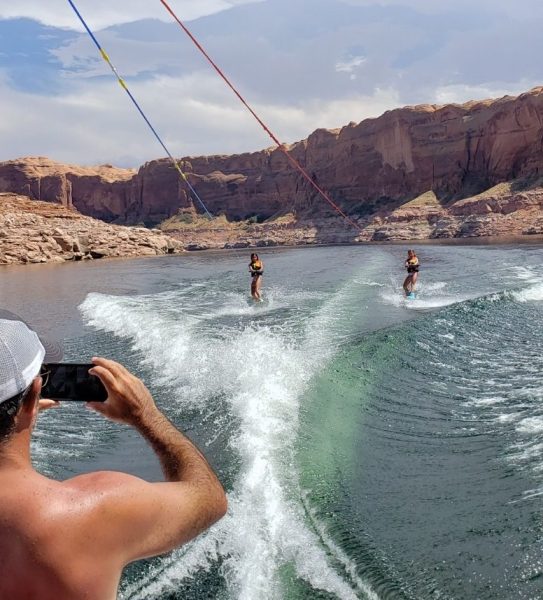Reach for the Sky!
Since the beginning of time, man has always dreamed of flying. Until we can sprout wings and soar through the air, skydiving is the closest alternative there is. As early as 11th century China, daredevils would use parasols to jump from tall outcroppings and slow their descent. Although not technically skydiving as we know it today, the act of jumping from heights sparked its cousin sport of BASE jumping (buildings, antenna, spans, and earth).
In 1485, Leonardo DaVinci sketched blueprints for the first conical parachute, although never constructed. Nearly three hundred years later in 1783, Louis-Sebastien Lenormand jumped 85 feet from the top of the Montpellier Observatory in France with two umbrellas and made it out unscathed.
Balloonist Andre-Jacques Garnerin is often accredited with designing, developing, and testing the modern parachute. From 3200 feet in the air, Garnerin descended from a hydrogen balloon in a basket attached to a canopy. Although not the most efficient parachute, he landed unharmed and later made new developments to his concept. Garnerin made several successful jumps throughout his life, including one at 8000 feet, proving that man could soar.
As technology advanced and new developments were made to parachute technology—new materials, vents for airflow, and deployable backpack designs—parachuting reached new heights. United States Army Captain Albert Berry made the first successful parachute jump from a moving aircraft in 1912.
During World War II, parachuting became less of a stunt as the US military used it tactically in battle with paratroopers entering enemy territory via air. Following the war, soldiers continued parachuting as an exhilarating hobby. Jumper Raymond Young coined the term “skydiving” in the 1950s. Competitions and training centers emerged as skydiving was established as an official sport in 1952.
Today, skydiving is not just an exhilarating activity, but an art form. Competitions include categories such as formation skydiving and canopy relative work, in which a team of divers performs formations as they descend. Other categories include classic style, where a diver carries out timed maneuvers, and accuracy trials in which the diver has to land in a designated spot.
“[It’s like] falling really fast. Everything feels blurry. A lot of adrenaline. Life seems to disappear…You’re completely taken out of yourself because it’s such an overwhelming experience,” says Nolan Walt, a senior at Huntington Beach High School.
Walt decided to go skydiving following his 18th birthday, the legal age for skydiving in the U.S. “Jumping out of a plane seemed really cool. There’s really no other reason [why I went skydiving]. I just thought it’d be fun to jump out of a plane,” he elaborates.
Interested in skydiving yourself? Check out these facilities in the area!
- Skydive Elsinore: 20701 Cereal St, Lake Elsinore, CA 92530
- Skydive Perris: 2091 Goetz Rd, Perris, CA 92570
- GoJump Oceanside: 480 Airport Rd, Oceanside, CA 92058
Your donation will support the student journalists of Huntington Beach High School. Your contribution will allow us to cover our annual website hosting costs.
Thank you for supporting our program!







